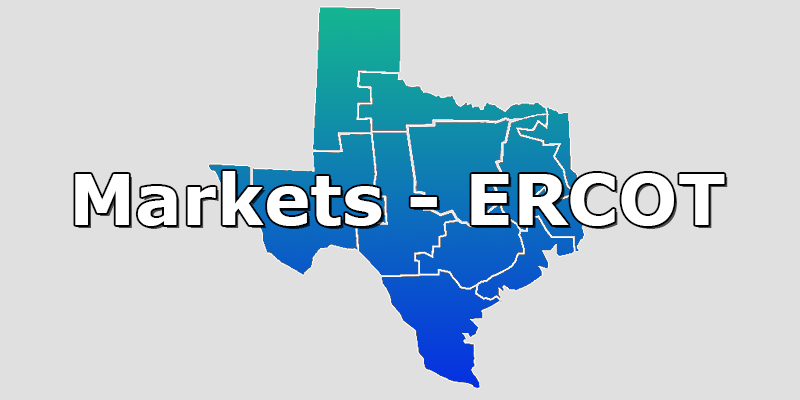After Winter Storm Uri in February 2021, the Texas legislatures passed Senate Bill 3, which includes provisions intended to improve the reliability of the grid. One specific portion of this law in Section 18(3) calls for the competitive procurement of additional ancillary services to ensure there is enough electricity supply to keep up with demand during future severe winter weather events.
The Public Utility Commission ordered ERCOT to develop a “firm-fuel” product that would improve grid stability by procuring 3,000 to 4,000 MW of capacity from generation resources that do not depend on natural gas delivered through pipelines. The intent of this provision of the law is to ensure that a certain amount of additional deployable generation capacity can operate even during times of low natural gas pressure in the state’s pipeline system. This new ancillary service is known as Firm Fuel Supply Service (FFSS). The provision required the procurement of this additional reserve capacity to not exceed $54 million and covers the period from November 15 through March 15. In all, 2,941 MW of generation capacity was procured from 19 different generation assets across the state at a total cost of $52.9 million.
Eighteen of the nineteen assets that cleared the auction will use fuel oil (diesel) as the backup fuel source with only one asset relying on onsite natural gas storage capabilities. It is interesting to note that 77% of this capacity is from older, inefficient steam turbine power plants built between 1958 and 1978. These assets use steam, produced from boilers to spin the turbine blades which produce electricity. The remaining 23% of the FFSS capacity was procured from generators that entered service after 1988. These “newer” plants burn fuel in large gas turbine engines, similar to marine turbine generators used in naval and commercial vessels. These engines can run on natural gas, jet fuel, or diesel. A summary of the generating assets procured through this inaugural FFSS auction is shown in Figure 1.
2 min read
ERCOT’s New Winter-Only Ancillary Service
By 5 on November 28, 2022
Topics: Markets ERCOT
2 min read
Lubbock: Deregulation 101
By 5 on November 17, 2022
Topics: Markets ERCOT Lubbock
10 min read
November 2022 - Energy Market Letter
By Jon Moore on November 2, 2022
On behalf of the team at 5, I am pleased to forward our November market letter. This letter discusses: (i) the upcoming Mid-Term Elections, and how the results could impact energy policy; and (ii) the challenges facing grid system operators in Texas, New England and New York as they work to integrate large volumes of intermittent resources into the grid mix.
The Mid-Term Elections
Recent polls favor Republicans to take control of the House and perhaps the Senate as well. As a result, several clients have asked what such a change in Washington could mean for energy policy. The question is particularly interesting because the landmark Inflation Reduction Act (IRA), which allocated some $369 billion to the energy sector, was passed by the Senate and the House without a single Republican vote.
The Inflation Reduction Act: The short answer is that the election results will probably have little effect on energy policy. While a change in control of the House or the shift of a single Senate seat would have doomed passage of this legislation, since it was passed and signed into law by President Biden, it will be difficult to repeal it. Even if the House and Senate pass legislation to repeal or amend portions of the IRA, President Biden has veto power, and overriding a veto requires a vote of two-thirds of the members in the House and Senate. This is good news for developers of renewable power, energy storage, electrical vehicle manufacturers and others that will benefit from the incentives found in the IRA. But this does not mean that the IRA and its various energy incentives are immune from challenges in the courts.
There are some interesting parallels between the IRA and the Affordable Care Act (ACA). Like the IRA, the Democrats used budget reconciliation to get the ACA approved by the Senate, and all Republicans in the House and Senate opposed the ACA. President Obama signed the ACA in March 2010, and in the November 2010 mid-term elections, the Democrats lost control of the House, in part, because of opposition to the ACA. The new congress did not reverse or upend the ACA, in part because politicians have little appetite for taking benefits away from voters. Yet the law became the subject of extensive legal challenges, one of which ended up in the Supreme Court.
While there is considerable opposition to the IRA, and it will undoubtedly face legal challenges, even though the law does not appear to be subject to the same serious constitutional challenges (for example, the constitutionality of the insurance mandate) that faced the ACA. In addition, as in the case of the ACA, we expect that in the two years remaining in the Biden Administration, a significant amount of the benefits will be granted to various energy projects. Once grants are made, it will be difficult if not impossible to reverse them.
Congressional Oversight: While the IRA may be safe from legal challenges, we expect that a Republican controlled house will use its oversight powers to review almost all aspects of the IRA and other programs that address climate change. This could certainly cause some delays in the implementation of the IRA’s programs and slow or halt other efforts to address climate change such as the SEC’s plan to require ESG reporting. For example, comments from Rep. Garland “Andy” Barr of Kentucky, a member of the House Financial Services Committee, indicated that ESG principles, “will be one of the major focuses of oversight of a Republican majority” adding that “My view is that ESG investing is a cancer within our capital markets,” Barr said. “It is a fraud on American investors.”
On the state level, we have already seen several states, pushing back against BlackRock and other investment firms that prioritize ESG principles. Texas has passed legislation that restricts the state’s retirement and investment funds from doing business with firms that “boycott” the oil and gas sector. Echoing this approach, Louisiana Treasurer John Schroder recently pulled $794 billion in pension fund money from BlackRock funds due to their use of ESG criteria in making investment decisions. “Your blatantly anti-fossil fuel policies would destroy Louisiana’s economy,” Schroder said. “In my opinion, your support of ESG investing is inconsistent with the best economic interests and values of Louisiana,” Schroder said.
Other than some minor changes to the approval process to FERC commissioners, we cannot think of other ways that a change in House or Senate leadership will impact federal energy policy – but as noted above, there is no shortage of ways in which the House and Senate can investigate the energy industry.
Looking past the mid-terms, if a Republican candidate is elected President in 2024, we might see an effort to pass legislation repealing the IRA. When President Donald Trump was elected in November 2016, Vice President Mike Pence stated, “President elect Donald Trump will prioritize repealing President Barack Obama’s landmark health care law right ‘out of the gate’ once he takes office.”
But as I expect will be the case with the IRA, once the energy community is offered the $369 billion in incentives, it will be very difficult for a future administration to repeal these benefits.
Permitting Reform: While repealing the IRA may be top of mind, the fate of Sen. Manchin’s effort to expedite permitting of critical energy infrastructure is equally important. In the run up to passage of the IRA, Senate Majority Leader Schumer agreed to support Manchin’s permitting bill (which included a requirement that Federal Agencies approve the controversial Mountain Valley Pipeline that Manchin supports) in exchange for Manchin’s support of the IRA. The bill seemed to be a good compromise, angering both Republicans who said it did not do enough for the fossil fuel industry and Democrats who said it did too much.
After the mid-term elections, it will be interesting to see if the Manchin bill can form the basis of bipartisan legislation that addresses the need to upgrade the nation’s energy infrastructure. As we note in the last section of this letter, there is a growing consensus among all participants that the grid envisioned by the energy transition does not yet exist. A recent Washington Post story is emblematic of the issue faced by new generation and transmission projects across the nation.
In this case, nearly ten years into the permitting process, a geo-thermal company had started construction of a plant that would provide carbon free energy to California residents. Late into this process, developers found out that: (i) the warm water drawn from the earth to power generation may threaten a rare toad, and (ii) the project’s location impinges on a sacred healing place for the Shoshone Tribe. The U.S. Fish and Wildlife Service has ordered the project stopped, while the Bureau of Land Management has pointed to the project as one of the ways the Biden administration is successfully confronting the climate crisis. This is just the kind of permitting delay that the Manchin bill was designed to address.
Intermittent Resources and The Energy Transition
Intermittent resources are generating assets that are not continuously available such as electricity that comes from wind farms and solar arrays. The growth of intermittent generation continues to challenge system operators who are responsible for ensuring a reliable supply of electricity. In the balance of this letter, we discuss ways in which intermittent supplies are challenging three markets, ERCOT, the New England ISO (NEISO) and New York ISO (NYISO).[1]
ERCOT: In ERCOT, the state in the country with the highest volume of wind and solar generation, we are clearly seeing the challenge that intermittent generation places on the system operators responsible for managing the reliability of the grid. As shown in Figure 1, on one day in Mid-October, wind resources generated approximately 18,000 MWs in the morning and only 1,200 MWs in the afternoon. The variation of solar output is equally dramatic. The chart below shows the combined hourly output of wind and solar over the last several weeks.
Topics: Markets Natural Gas NYISO ERCOT Sustainability Newsletters Education Renewables
3 min read
Is Texas the New California?
By 5 on September 29, 2022
There is no doubt that the rapid growth of utility-scale solar in Texas has helped the state meet its ever-increasing electricity demand during hot and dry summer afternoons. The 10X increase in solar capacity in ERCOT over the past five years has kept summer afternoon peak prices in check, contributing to almost 6% of ERCOT’s total power this year (over 17 million MWh of emission-free power). But all that shimmers in the West Texas sun is not gold, and as California is learning, solar alone will not solve the state’s capacity problems.
Topics: Markets ERCOT
3 min read
Transmission Costs Continue to Rise
By 5 on August 31, 2022
Last fall, 5 discussed the mechanism by which costs associated with the high-voltage transmission system are allocated across end-users in Texas. The current system enables the four Investor-Owned Utilities (IOUs) to update their tariffs twice a year, in March and in September, allowing the utilities to recoup their external costs for the state’s transmission system. Like last year, most customer classes across the four utilities should expect significant rate increases in September. The magnitude of these increases in each utility territory is shown in Figure 1.
Topics: Markets ERCOT
4 min read
Setting New Records Almost Daily
By 5 on July 28, 2022
What is Driving the Increased Load in Texas?
This summer, it is clear how much the state of Texas has grown over the last few years. When Texas first deregulated its power grid about 20 years ago, the population of Texas was around 20 million. By 2010, it had grown to just over 25 million, and by 2020 it was just over 29 million. Texas is actually expected to hit 30 million this year, a growth of about 50% in 20 years. With this kind of population growth, it is no wonder that the total load on the ERCOT grid this summer is setting all-time records, it is just the frequency and magnitude of those records being broken that caught many of us by surprise.
Topics: Markets ERCOT
2 min read
The Fall of Near-Term Prices
By 5 on June 29, 2022
Over the last year, forward electricity prices in ERCOT have continued to climb and set new highs every month. Figure 1 shows the price of wholesale electricity for calendar years 2023 through 2026 over the last 12 months. Notice that beginning in March, the rate of price increase has accelerated with the market setting new highs, followed by a slight correction and again testing new highs in the following month. Any trader will affirm that this is not sustainable in the long term and at some point, a downward move was inevitable. That move began in the middle of June. And as shown in Figure 1, prices have fallen over the next four calendar years. The most dramatic move can be seen in the 12-month strip for calendar year 2023. On June 14, calendar year 2023 was trading at $72.87/MWh. On June 27, 2022, that same calendar strip was trading at $52.39/MWh – a decrease of 28% over a two-week period.
Topics: ERCOT
4 min read
What does SARA think?
By 5 on May 31, 2022
A Review of ERCOT's Seasonal Assessment of Resource Adequacy report for Summer 2022
The Seasonal Assessment of Resource Adequacy report, otherwise known as SARA, is a quarterly publication from ERCOT that gives its assessment of the short-term risk of Energy Emergency Alerts. This assessment looks at both load growth and peak demand forecasts, along with generation capacity and probability of availability to determine the potential for the state’s power grid to run out of power when it is needed the most. In May, ERCOT published the SARA report for this summer, with the following highlights.
Topics: Markets ERCOT
4 min read
Coincidental Peaks Should Peak Your Interest
By 5 on May 31, 2022
An Overview of Coincidental Peak Costs by ISO
Coincidental Peak (CP) is the measurement of an electricity meter’s actual usage at the time of the regional grid’s highest demand and determining that meter's share of the entire grid’s demand. This concept of identifying a facility’s share of the grid’s total maximum demand is often used in determining the allocation of specific cost components. The specific methodology of how that equation works and which cost components it impacts varies from region to region, and often even utility to utility, and even by customer class, but the overall concept is the same. In this post, we explain how this works in each of the major, deregulated electricity regions, and detail which costs are the most impacted by this variable.
Topics: Markets PJM NYISO ERCOT Demand Response Resiliency
2 min read
Volatility Demands Smarter Strategy
By 5 on April 29, 2022
If you have been shopping for retail power in Texas, then what we are about to report will not come as a surprise. However, if you have not seen wholesale power prices in ERCOT in a few months, you should probably sit down before you continue.




